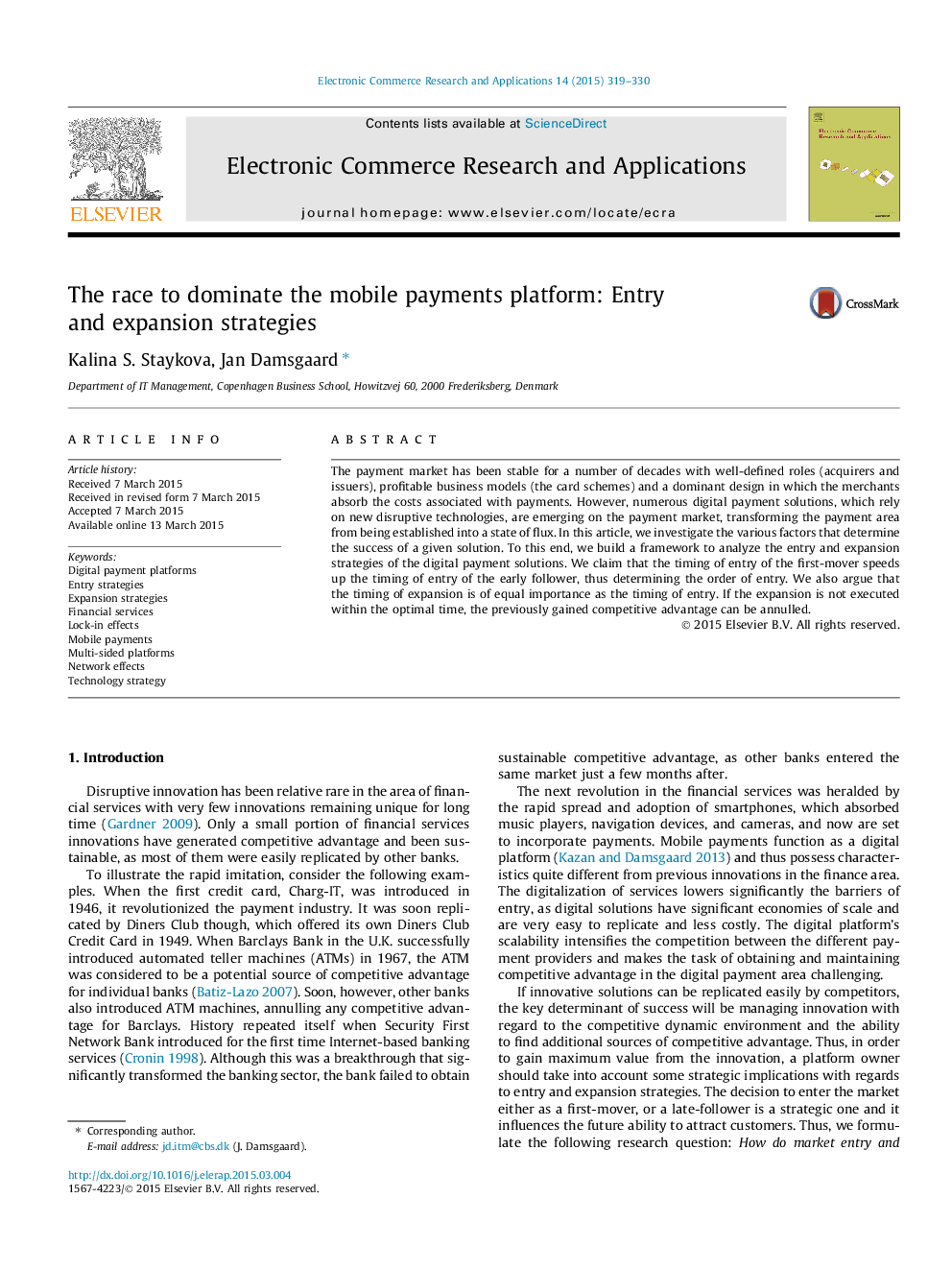| Article ID | Journal | Published Year | Pages | File Type |
|---|---|---|---|---|
| 379576 | Electronic Commerce Research and Applications | 2015 | 12 Pages |
•Investigates various factors that determine the success of a mobile payments solution.•Builds a framework to analyze the entry and expansion strategies of digital payment solutions providers.•Reports that the timing of entry of the first-mover speeds up the time of entry of the early followers.•Shows that the timing of expansion is of equal importance as the timing of entry.•If the expansion is not executed within an appropriate amount of time, the firm-level competitive advantage will be weakened.
The payment market has been stable for a number of decades with well-defined roles (acquirers and issuers), profitable business models (the card schemes) and a dominant design in which the merchants absorb the costs associated with payments. However, numerous digital payment solutions, which rely on new disruptive technologies, are emerging on the payment market, transforming the payment area from being established into a state of flux. In this article, we investigate the various factors that determine the success of a given solution. To this end, we build a framework to analyze the entry and expansion strategies of the digital payment solutions. We claim that the timing of entry of the first-mover speeds up the timing of entry of the early follower, thus determining the order of entry. We also argue that the timing of expansion is of equal importance as the timing of entry. If the expansion is not executed within the optimal time, the previously gained competitive advantage can be annulled.
Graphical abstractFigure optionsDownload full-size imageDownload as PowerPoint slide
